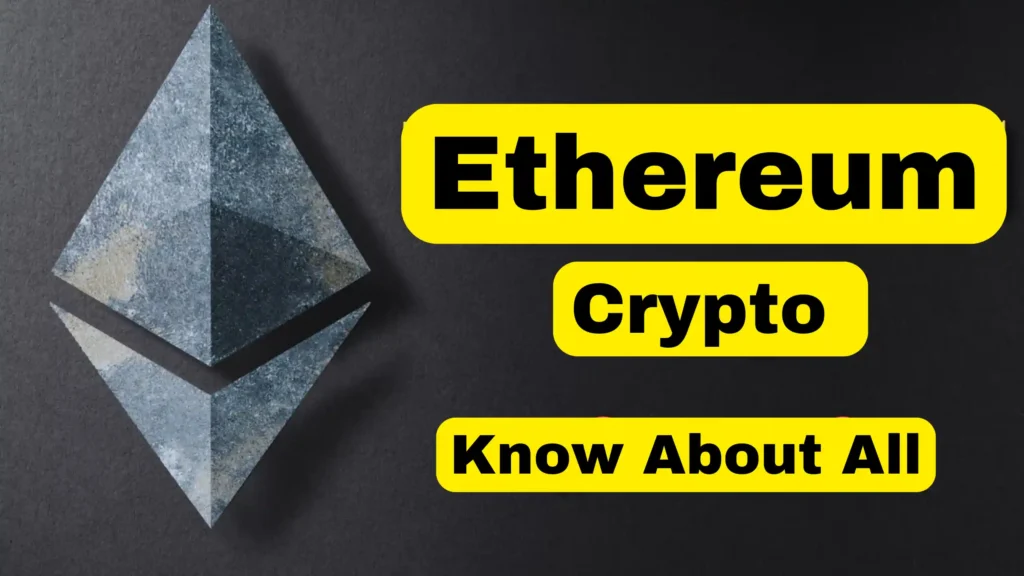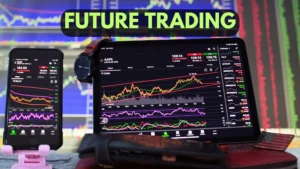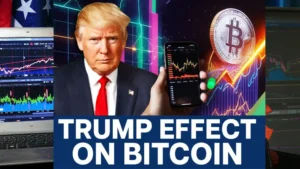You must have heard of Ethereum many times, but do you know that it is a blockchain-based platform on which decentralized applications, i.e. dApps, can be created? And smart contracts too. What are dApps and smart contracts? Before knowing this, let’s know about blockchain once.

👉 blockchain
It is a kind of digital record book that stores transactions in blocks. And these blocks remain linked in a chain. This blockchain technology is decentralized, i.e. it is not stored on a single computer or server, but is distributed on thousands of computers around the world.
It is not controlled by any central authority, so it is open and accessible to everyone. It is so secure that no one can easily make changes to it. And neither can it hack store records.
Therefore, the Ethereum platform uses this technology to store and manage data and gives its users the facility to make such smooth transactions, and run programs that are not dependent on any bank, government or company.
The main purpose of Ethereum is to provide such a decentralized environment in which applications can be run without any middleman. This middleman can be a bank or a tech company.
👉 Ethereum
The currency used for transactions on this platform is Ether, which is a cryptocurrency like Bitcoin, but a little less popular than that. This currency exists digitally and can be bought and sold. It is used to run applications and smart contracts on the Ethereum network.
Ether currency can be sent anywhere in the world on the Ethereum platform. And this transaction is stored on the Ethereum blockchain.
👉 dApps & Cryptocurrency wallets
Now let’s talk about dApps and smart contracts. So dApps i.e. decentralized applications are such applications that run on a blockchain like decentralized networks.
These applications are distributed between multiple independent computers These computers are called nodes. None of the central authorities have control over these dApps. The development of these applications is done by experienced software developers and blockchain developers.
And they are used by common users who want to know about cryptocurrency and blockchain technology. And use applications such as decentralized finance, gaming, social media, marketplace and voting systems. Apart from such common users, crypto investors and traders also use it. And developers and innovators too.
Cryptocurrency wallets like MetaMask are dApps, which allow users to manage their cryptocurrencies and interact with dApps.
Similarly, decentralized exchanges like Uniswap and PancakeSwap are also dApps, on which users can directly exchange their cryptocurrencies without any middleman.
Smart contracts are used to make these dApps. That’s why they are also very important. Smart contracts are such digital agreements that run on the blockchain. And as soon as the predefined rules and conditions are fulfilled, it is automatically executed.
example, suppose you have decided with a person that you will pay him in Ether currency. If he delivers the product to you in a week, then it will be written on the smart contract.
Like this terms of agreement, you have to pay when the product is delivered. Now this contract will be stored on the Ethereum blockchain. And as soon as the condition is fulfilled, that is, the product will be delivered in a fixed time, the smart contract will automatically pay in Ether currency directly at the seller’s address.
There is no need to verify this process. And because this contract is stored on the blockchain, it is safe, secure and transparent. This smart contract is very popular in DeFi and dApps. Let me tell you that DeFi means Decentralized Finance. And in this, loans, trading and investment such as financial services can be done without banks. It is also used in NFTs i.e. non-fungible tokens.
This NFT is a digital asset or token that exists on the blockchain. And each token has its own value. It cannot be exchanged with other tokens. They are made through smart contracts and include digital art, music, videos, virtual real estate, etc.
Its users get the real ownership of their digital assets, which cannot be copied or replicated. Any artist, game developer or content creator can secure their digital content such as artwork, video or music by converting it into NFT.
In this way, smart contracts used mainly in DeApps, DeFi and NFTs are transparent, secure and automated. Without any middleman or third-party interference. Ethereum platform is the platform that supports smart contracts the most. On which these contracts are written in solidity programming language.
👉 how Ethereum works
And now we know how Ethereum works. So on Ethereum, users create and run smart contracts. Miners use proof-of-work and proof-of-stake mechanisms.
Proof-of-work means that miners use powerful computers to solve complex math problems. So that transactions can be validated and new blocks can be added to the blockchain.
This process takes a little slow and a lot of energy. And in the proof-of-stake mechanism, validators lock their cryptocurrency Ether. There is no need for mining in this process.
So this process is fast and energy efficient. Those who help to verify transactions through proof-of-work or proof-of-stake, they get Ether currency as a reward.
👉 mining & trading on Ethereum
Let me tell you that the process by which cryptocurrency transactions are validated by solving complex problems is called mining.
And the person who performs this mining process is called a miner. And if someone wants to trade on this platform, what should he do? So to trade on Ethereum, it is necessary to create an Ethereum wallet. For this, wallets such as Metamask or Trust Wallet can be downloaded.
After that, Coinbase, Binance or Wazirix are signed up on the cryptocurrency exchange. And using Your currency, Ether is purchased on the exchange. This Ether can be transferred to your Ethereum wallet address.
And then a transaction can be started in Ether. These transactions can be used to execute smart contracts. It is also used to use dApps and for token transfers.
It is also used for staking in the creation and transfer of NFTs and to pay transaction fees. In India, Ethereum is legal, that is, Ethereum trading is legal on cryptocurrency exchanges.
But the rules and regulations related to it are not very clear and can change over time. Therefore, before such investments and uses, it is necessary to take updates about the legal status of Ethereum.
There are also some challenges of this powerful platform, such as high transaction fees, i.e. gas fees, scalability and environmental impact. Because it takes a lot of energy to use it.
And when more people use it, it slows down. But now Ethereum upgrades can fix these problems to a great extent. And this upgrade is Ethereum 2.0, in which Ethereum has migrated from POW, i.e. Power of Work Mechanism, to POS, i.e. Power of Stake Mechanism.
which is energy efficient. Therefore, it is believed that this migration will make the Ethereum platform more scalable, energy efficient and secure in the future. It will also be able to reduce fees, which will make it easier to grow and handle more applications, which can increase its popularity and use.
So now you know that Ethereum, based on blockchain technology, is a popular and flexible platform, which makes transactions possible through Ether currencies and provides the convenience of running dApps and smart contracts. Its transparency, worldwide approach and security are its major benefits.
So over-energy use, slow speed and high fees are also its drawbacks, which can be eliminated through its upgraded version.
Now you tell us in the comment section that how unique and informative this information based on Ethereum has been for you. And also do not forget to share this article with as many people as possible
If you have already liked it, then keep sharing your love and support in the comment section. Thanks for visiting.

